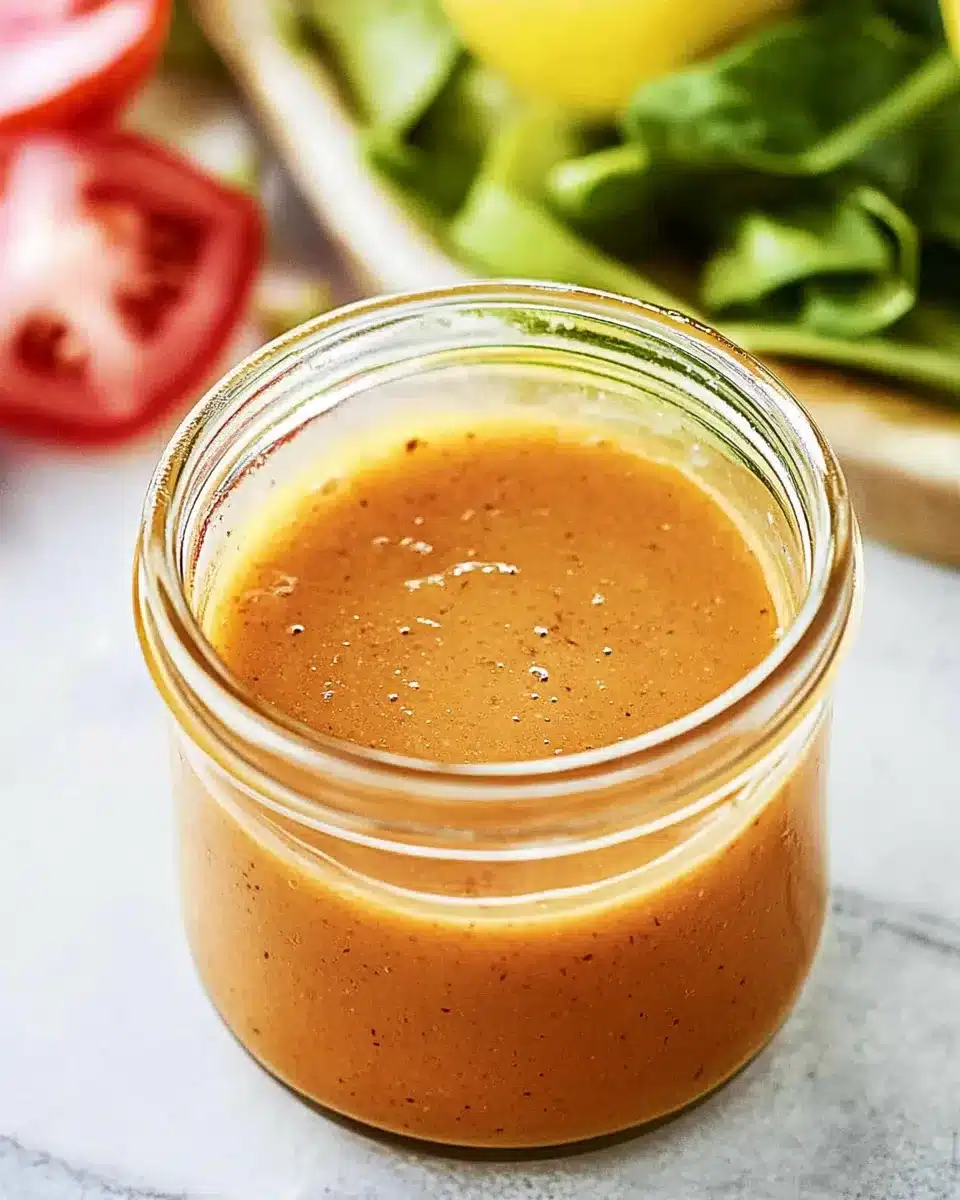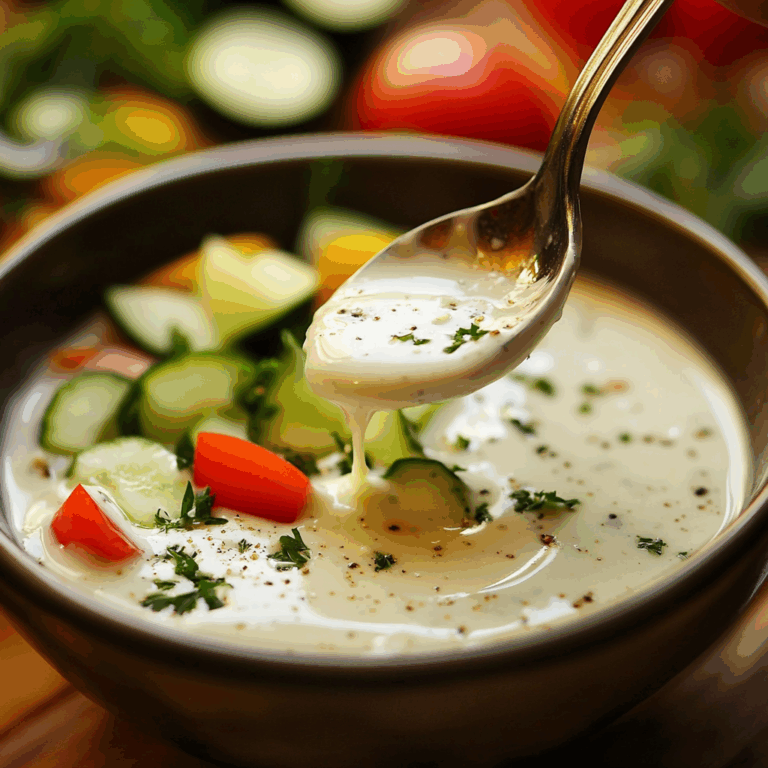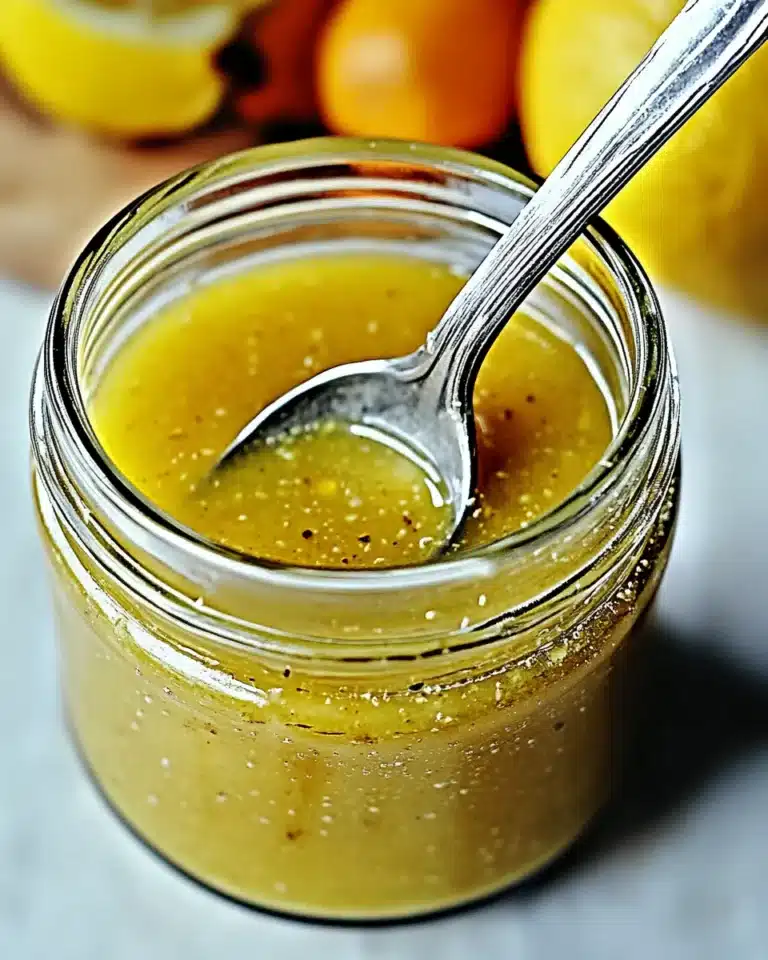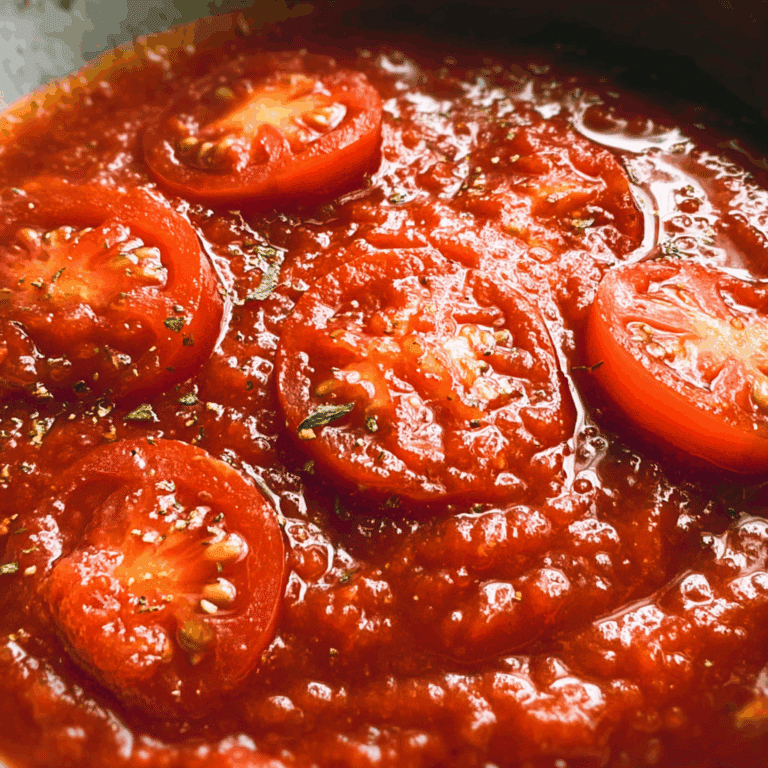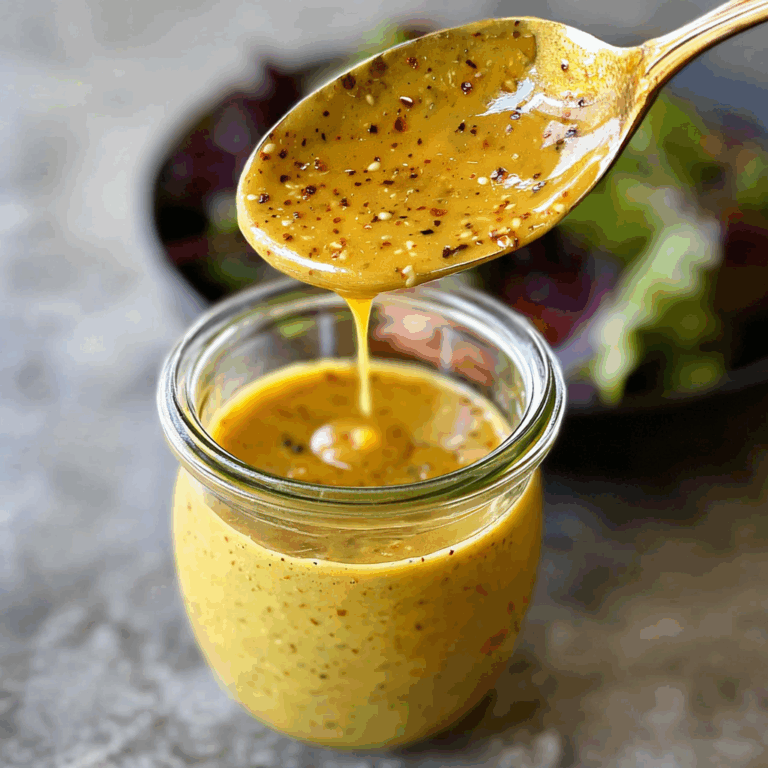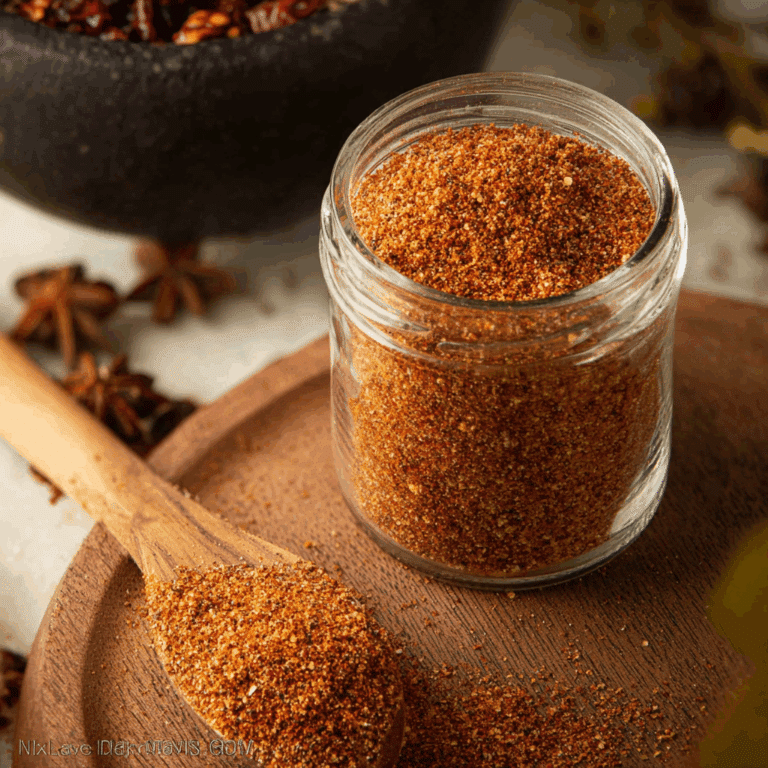Lemon Vinaigrette Salad Dressing: Fresh and Easy Recipe
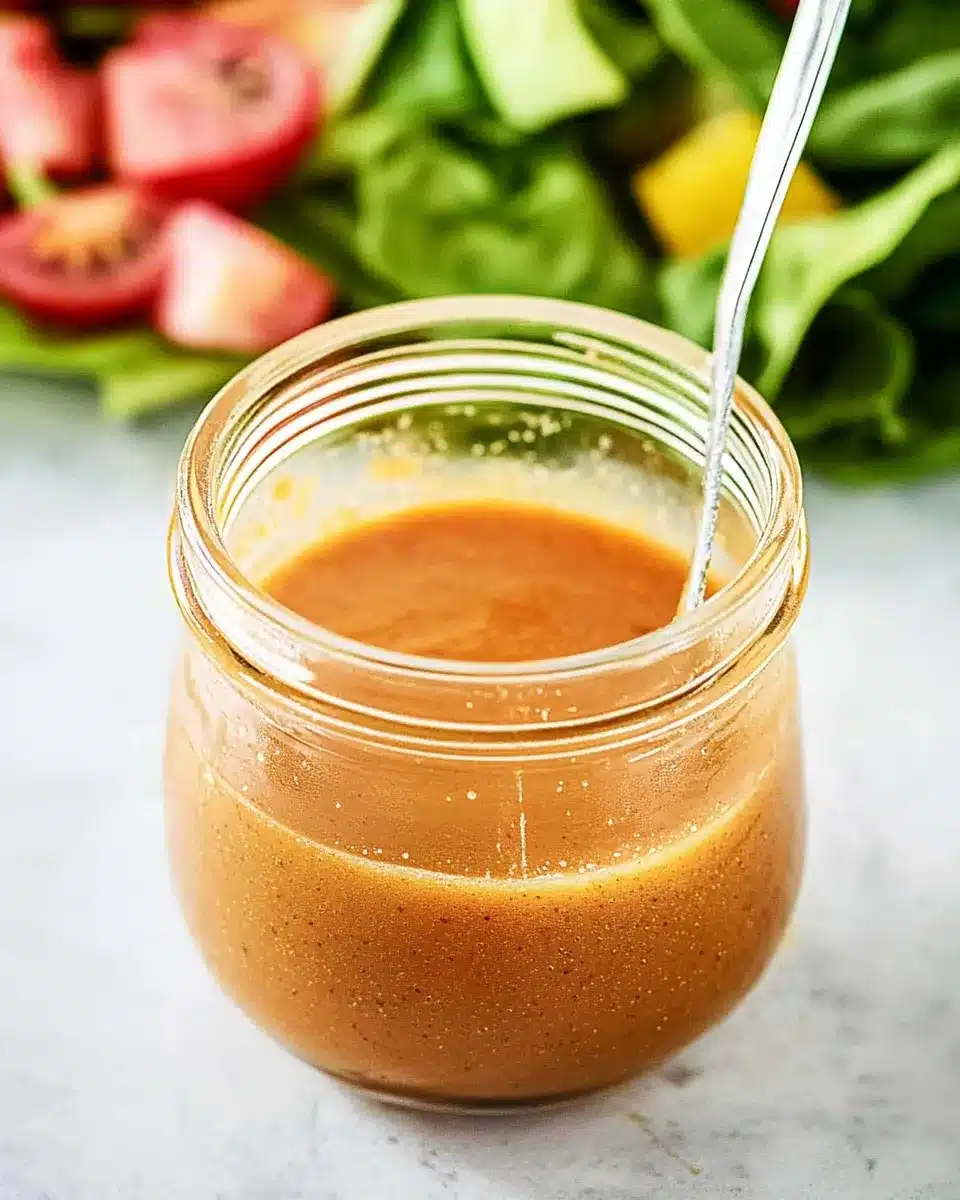
Liven up your culinary creations with the irresistible charm of Lemon Vinaigrette Salad Dressing. This zesty concoction not only adds a burst of freshness to your salads, but it also enhances grilled vegetables, seafood, and even marinades for meats. Imagine drizzling a tangy blend of lemon juice, olive oil, and herbs over a crisp garden salad, instantly elevating the flavors and inviting your taste buds to dance.
The beauty of this dressing lies in its versatility; feel free to experiment by incorporating different ingredients, such as honey for sweetness or Dijon mustard for a little kick. To ensure the perfect balance of flavors, remember that fresh lemons yield brighter results than bottled juice. For a creamier texture, consider whisking in some Greek yogurt or a spoonful of avocado.
Whether you’re preparing a simple weeknight dinner or an elaborate gathering, master this dressing and watch how it transforms your meals from mundane to magnificent. Your salads deserve the zest of Lemon Vinaigrette – it’s time to shake things up!
Ingredients for Lemon Vinaigrette Salad Dressing:
This refreshing and zesty dressing is perfect for drizzling over garden salads, grilled vegetables, or even using as a marinade. Below is a detailed list of ingredients to create a Lemon Vinaigrette that serves 8–10 people.
Essential Ingredients
- Fresh Lemons: 4 large (yielding approximately ½ cup of fresh lemon juice)
- Extra-Virgin Olive Oil: 1 cup (for a rich flavor that complements the acidity)
- Honey or Agave Syrup: 2 tablespoons (to balance the tartness of the lemon)
- Dijon Mustard: 2 teaspoons (adds a subtle tang and emulsifies the dressing)
- Garlic: 2 cloves, minced (for an aromatic depth)
- Salt: ½ teaspoon (adjust to taste)
- Freshly Ground Black Pepper: ¼ teaspoon (to taste)
Optional Additions for Flavor Enhancement
- Fresh Herbs: 2 tablespoons of finely chopped parsley, basil, or dill (for a fresh burst of flavor)
- Shallot: 1 small, finely minced (adds a mild onion flavor)
- Red Pepper Flakes: ¼ teaspoon (for a subtle heat)
- Parmesan Cheese: 2 tablespoons grated (adds a creamy, savory element)
Variations to Consider
- Honey Lemon Vinaigrette: Increase honey or agave syrup to 3 tablespoons for a sweeter dressing.
- Spicy Lemon Vinaigrette: Incorporate a teaspoon of Sriracha or other hot sauce for a kick.
- Nutty Flavor: Replace half of the olive oil with toasted sesame oil for an Asian twist.
Feel free to mix and match some of these ingredients based on your personal taste and the dish you plan to serve it with. Experimenting with various herbs or even adding other citrus juices, such as orange or lime, can create exciting variations to the classic Lemon Vinaigrette. Enjoy creating a delicious and tangy dressing!
How to prepare Lemon Vinaigrette Salad Dressing:
Creating a fresh and zesty lemon vinaigrette salad dressing is simple and rewarding. Follow these steps to make your own delightful dressing that will elevate any salad.
Gather Your Ingredients
Start by assembling all necessary ingredients. You will need:
- 1/4 cup fresh lemon juice
- 1/2 cup extra-virgin olive oil
- 1 tablespoon Dijon mustard
- 1 teaspoon honey or maple syrup
- 1 clove garlic, minced
- Salt and black pepper to taste
Juicing the Lemons
Slice your lemons in half. Use a juicer or a fork to extract juice from the lemons. Aim for about 1/4 cup of fresh juice. Discard any seeds you encounter.
Mixing Lemon Juice with Mustard
In a medium-sized mixing bowl, add the freshly squeezed lemon juice. Then, incorporate the Dijon mustard. Whisk these two ingredients together until they blend smoothly.
Incorporating Sweetness
Add the honey or maple syrup to your lemon and mustard mixture. This adds a gentle sweetness to balance the tartness of the lemon. Whisk to combine thoroughly.
Adding Garlic for Flavor
Next, incorporate the minced garlic into your mix. Garlic brings warmth and depth to the vinaigrette. Whisk again until evenly distributed.
Emulsifying with Olive Oil
Slowly pour in the extra-virgin olive oil while continuously whisking the mixture. This step is vital for creating a well-emulsified vinaigrette. The dressing should begin to thicken and appear creamy.
Seasoning to Taste
Once the olive oil is fully incorporated, sprinkle in salt and black pepper. Start with a pinch of each and taste. Adjust seasoning according to your preference, adding more salt or pepper as desired.
Storing Your Dressing
If you are not using the dressing immediately, transfer it to a clean jar with a tight lid. Refrigerate until needed. Remember to shake or stir well before using, as separation may occur.
Now your homemade lemon vinaigrette salad dressing is ready to enhance your salads with a fresh burst of flavor!
Tips for the Perfect Lemon Vinaigrette Salad Dressing
Quality Ingredients Matter
Using fresh, high-quality ingredients elevates your dressing. Choose the best extra virgin olive oil you can find. Its flavor enhances the vinaigrette significantly. Select ripe, organic lemons for juicing, ensuring a bright and zesty taste. Fresh herbs, if desired, can offer an added layer of flavor. Dried herbs work, but they won’t provide the same freshness.
Maintain the Correct Temperature
Vinaigrette ingredients mix and emulsify better at room temperature. Allow your olive oil and any other refrigerated items to warm slightly before mixing. Cold ingredients may not blend well, leading to separation. If you’ve stored your dressing in the fridge, let it sit at room temperature for about 10 minutes before using it.
Suitable Substitutions for Dietary Restrictions
If you’re catering to certain dietary needs, you can easily modify this dressing. For those avoiding oil, try using aquafaba, the liquid from chickpeas, which can help create a creamy texture without fat. If you need a low-sodium option, use a pinch of salt or an alternative seasoning like nutritional yeast. For a vegan variation, ensure you use agave syrup or maple syrup instead of honey.
Perfecting the Flavor Balance
When it comes to lemon vinaigrette, balance is key. Start with a 3:1 ratio of oil to acid—this means three parts olive oil to one part lemon juice. Adjust based on your taste preferences; add a little more lemon juice for a tangier dressing or increase the oil for a milder flavor. You can also incorporate a hint of sweetness by adding a small amount of sugar or honey, which complements the acidity of the lemon.
Emulsifying Your Dressing
To prevent your dressing from separating, emulsify it properly. Whisk the ingredients vigorously in a bowl or jar. Alternatively, use a blender for a smoother finish. If using herb-infused oils or bland oils, consider whisking in a teaspoon of Dijon mustard to help stabilize the emulsion and add a subtle flavor boost.
By following these practical tips and customizing your approach based on personal preferences and dietary restrictions, you’ll create a delightful vinaigrette that complements any salad perfectly. Enjoy the freshness and the zing that a well-made vinaigrette brings to your meals!
Storage Tips for Lemon Vinaigrette Salad Dressing:
Maintaining Freshness
To keep your dressing fresh, always store it in an airtight container. A glass jar with a tight lid works best, as it protects the dressing from light and air. If you use plastic containers, ensure they are of high quality to avoid any leaching of flavors. After preparing the vinaigrette, make sure to refrigerate it right away. The cold temperature helps to preserve the taste and ingredients.
Optimal Storage Conditions
Store Lemon Vinaigrette in the refrigerator, where it can stay fresh for about one to two weeks. If you notice any separation, give it a good shake or stir before using. Vinegar-based dressings often separate, as oil and vinegar do not mix completely. Store it away from direct light and heat sources to further extend its shelf life. Avoid keeping it near your stove or oven.
Shelf Life and Signs of Spoilage
While homemade dressings typically have a shorter shelf life than store-bought varieties, you can often enjoy your vinaigrette for up to two weeks. Always check for signs of spoilage. If you spot any unusual odors, colors, or mold, discard the dressing immediately. A good rule of thumb is to trust your senses. If it smells off or looks different, it’s better to toss it.
Freezing Your Dressing
If you want to make large batches for later use, consider freezing the dressing. Use ice cube trays to portion out the dressing. Once frozen, transfer the cubes to a freezer-safe bag or container, expelling as much air as possible. Label the bag with the date for easy identification later. Thaw the desired amount in the refrigerator before using, and shake well after thawing.
Conclusion: Enjoy Your Dressing Longer
By following these simple storage tips, you can enjoy your homemade salad dressing for longer. With proper care, you maintain its vibrant flavor and freshness, enhancing your salads with ease. Always remember to check for spoilage, and feel free to customize your storage method to fit your needs. Enjoy your delicious creations!
Related Recipes
If you enjoy the bright and tangy flavors of lemon vinaigrette, you might also love these related recipes. Each one complements the lightness of the dressing, enhancing any meal you serve.
- Grilled Vegetable Salad: This salad features seasonal vegetables and a light dressing of olive oil and balsamic vinegar. The smoky flavor from the grilled veggies pairs wonderfully with the zesty notes of the lemon vinaigrette. Use them together for a refreshing and vibrant dish.
- Quinoa Tabbouleh: Packed with fresh herbs, tomatoes, and cucumbers, this Middle Eastern dish offers a refreshing crunch. When drizzled with lemon vinaigrette, the flavors meld perfectly, highlighting the brightness of each ingredient.
- Roasted Beet Salad: Earthy beets combined with creamy goat cheese create a unique flavor profile. A simple lemon vinaigrette adds just the right amount of acidity to balance the richness of the cheese and the sweetness of the beets, making every bite lively.
- Chickpea Salad: Combining chickpeas, diced bell peppers, and red onion gives this salad a satisfying texture. Tossing it with the dressing infuses a citrusy brightness that elevates the dish, making it a delightful side or light lunch option.
These recipes show how the tartness of lemon vinaigrette can enhance a variety of dishes. Enjoy experimenting with these combinations and discover new favorite meals.
Frequently Asked Questions:
What is lemon vinaigrette salad dressing made of?
The base ingredients of this zesty dressing typically include fresh lemon juice, olive oil, Dijon mustard, and a pinch of salt. Some variations might call for honey or garlic to enhance the flavor, while fresh herbs like parsley or thyme can add an extra layer of sophistication. The combination of tartness from the lemon and richness from the olive oil creates a beautifully balanced dressing.
How do I store lemon vinaigrette dressing?
To preserve the freshness of your homemade citrus-based dressing, it’s best stored in an airtight container in the refrigerator. This will keep the ingredients from oxidizing and maintain their vibrant flavors. It can last for about a week, but always give it a good shake before using, as the ingredients tend to separate over time.
Can I use different types of vinegar instead of lemon juice?
While the bright acidity of lemon juice defines this dressing, you can certainly experiment with alternatives. Vinegars like white wine, apple cider, or even balsamic can serve as substitutes, providing a different taste profile. Just bear in mind that the final flavor will vary based on the vinegar used.
What salads work best with lemon vinaigrette?
This tangy dressing pairs beautifully with a variety of salads, particularly those that feature greens like mixed greens, arugula, or spinach. It also complements salads that include fruits, nuts, or roasted vegetables, making it a versatile choice for both side and main dishes.
Is lemon vinaigrette dressing vegan?
Absolutely! This dressing is naturally vegan, as it does not contain any animal-derived ingredients. The simple blend of lemon juice and olive oil makes it suitable for those following a plant-based diet, while still delivering on flavor and brightness.
Can I make lemon vinaigrette dressing in advance?
Yes! Preparing this dressing ahead of time can actually enhance its flavor, allowing the ingredients to meld beautifully. Just remember to store it in the refrigerator, and give it a good shake before serving to re-emulsify the ingredients. This makes it a convenient option for meal prep or entertaining.
Conclusion:
In summary, creating a zesty Lemon Vinaigrette Salad Dressing is a straightforward process that elevates any salad with its bright flavor. This dressing not only showcases the simplicity of using fresh ingredients but also offers incredible flexibility in its preparation. By tweaking the ratio of lemon juice to oil or adding herbs and spices, you can customize it to suit your tastes easily. Whether you prefer it tangy or milder, this versatile dressing adapts beautifully to a variety of greens and toppings. Remember to store any leftovers in the refrigerator for a quick, delicious addition to your meals throughout the week. Embrace the creativity in the kitchen, and let your flavor preferences shine through with this delightful Lemon Vinaigrette, making healthy eating an enjoyable and refreshing experience.

